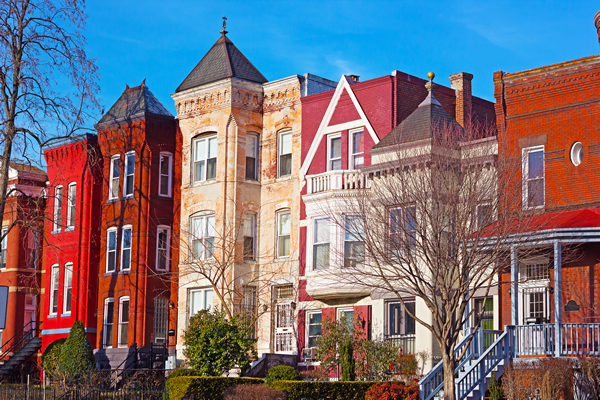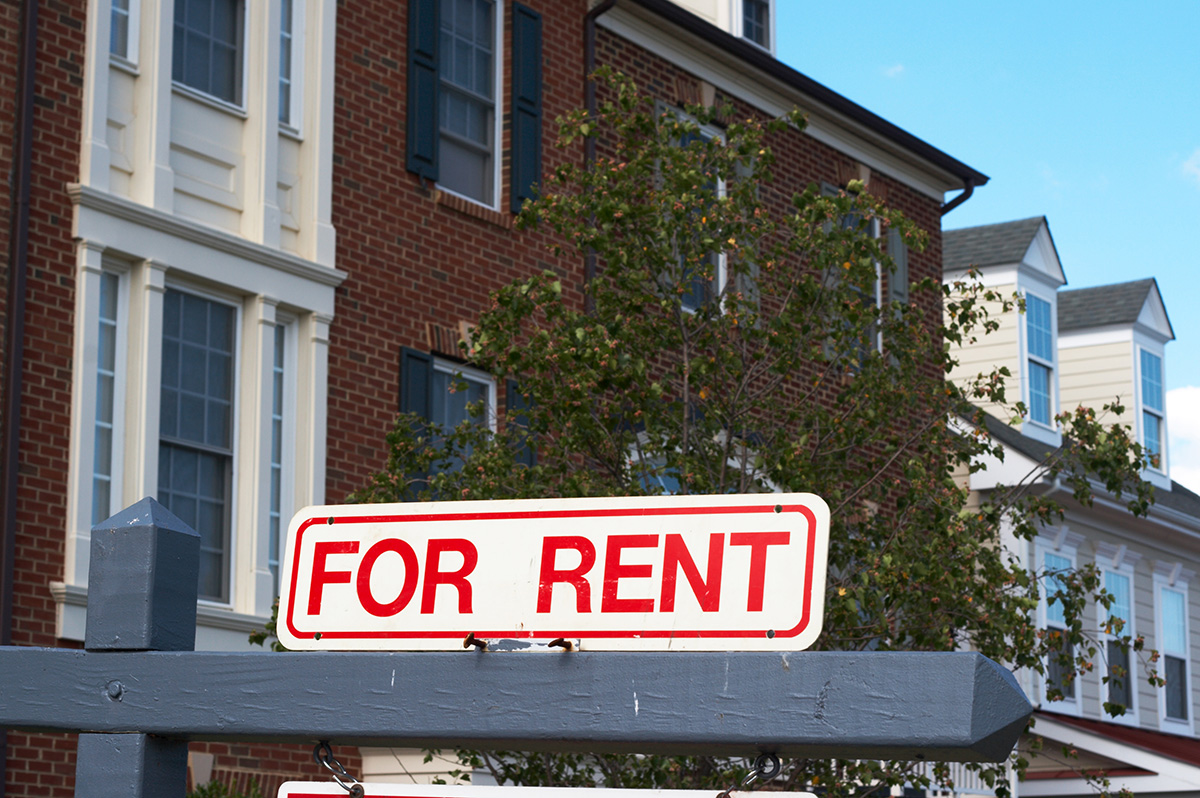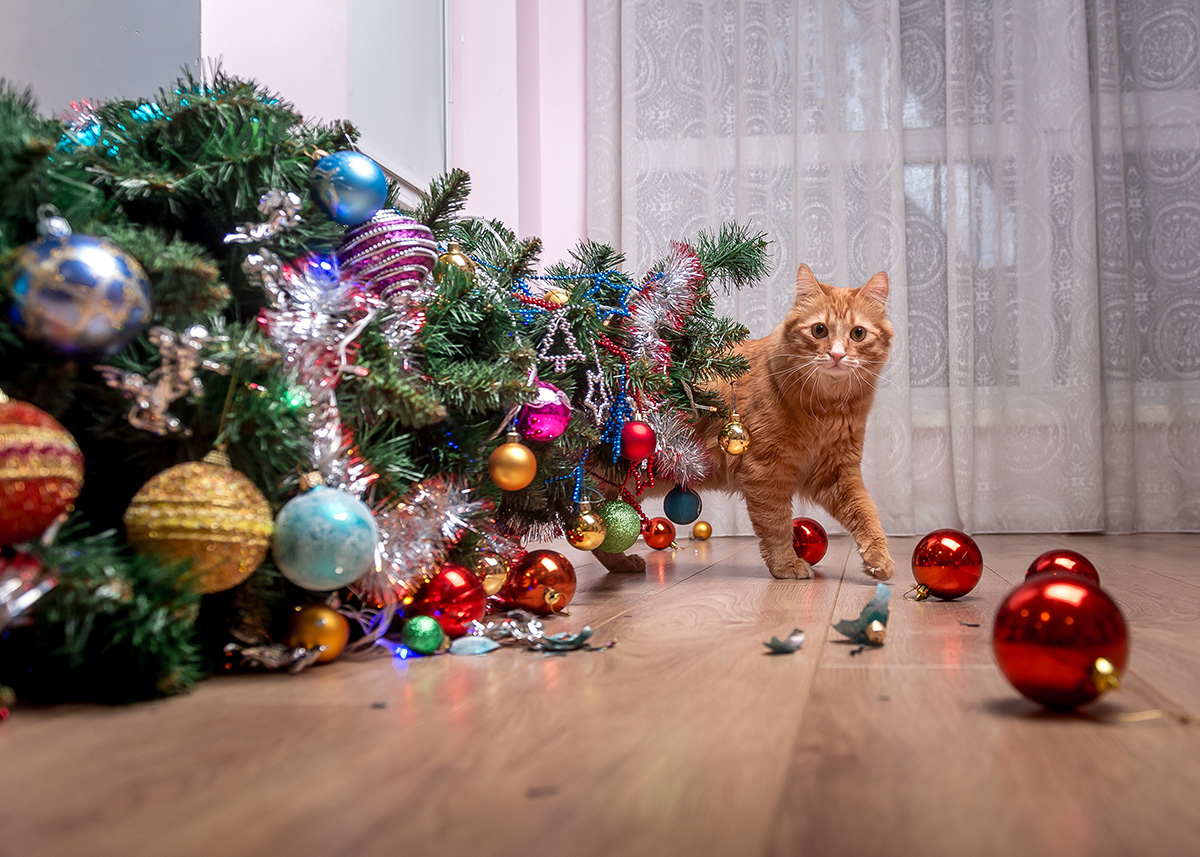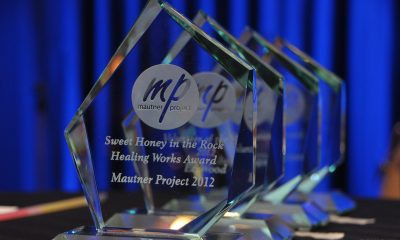Real Estate
Strong D.C. housing market has wide-ranging factors
City officials want to continue attracting newcomers while not pricing long-term Washingtonians out


Local Realtors say buyers are pricing their properties more strategically than they were a decade ago based on current buying trends.
Ed Wood is a D.C.-based realtor with City Houses LLC for 20 years and former president of the District of Columbia Association of Relators. He sells in all eight wards and averages 15-20 sales per year.
He spoke with the Washington Blade this week on local housing trends, renting vs. buying and why the rental market is soft now, but likely to explode in the coming years. His comments have been slightly edited for length.
WASHINGTON BLADE: It seems most agree in Washington we’re back to pre-recession prices and multiple offers on real estate. Is that your assessment?
ED WOOD: Yes. D.C. was in a much better position during and after the recession. We saw a flattening but then it picked up fairly quickly and the market has been really strong ever since about 2011, 2012. We regularly see multiple offers still on properties.
BLADE: Is the asking price sort of an opening bid in those situations?
WOOD: It depends where it’s priced. It’s they’ve priced a little below asking, they’ll often get multiple offers and it will bump up. If they’re priced at asking or above, we do see things sit on the market because of that. Buyers are more savvy and more cautious than they were pre-2008.
BLADE: Were there many cases in D.C. where a homeowner may have been underwater on their mortgage during the recession but got out of it once the economy rebounded?
WOOD: There wasn’t a lot of that in D.C. It was more in the suburbs and more likely the further you got out from the city but those prices we saw coming back by last year. Occasionally in some of the more developing neighborhoods we saw some slow downs and some price softening but those prices have completely come back. Many values have increased above what people paid.
BLADE: How is the market for rentals vs. sales in Washington?
WOOD: The rental market has been fairly soft for awhile while the buying market has been strong. A lot of the buildings that are going up in the city have been rental buildings as opposed to condos and that’s because the long-term demographic outlook for the city — we’re still gaining about a thousand residents a month — is expected to be over a million by 2030 so there are a lot of companies from around the country who see this as a really good rental market and they’re interested in the long term. We’re not seeing the number of condos we saw pre-2008, so that’s why we see the competition. There’s still not enough inventory.
BLADE: Why is the rental market soft if the projections are so strong?
WOOD: They’re building for that projected million residents. (Editor’s note: D.C.’s current population is about 672,000.) You can’t suddenly build all the units you’ll need, so they’re building them now for five-10 years down the road. These are big companies who work in the long-term market so they can afford to do this. Sometimes they’ll even go to developers building a condo building and say, “Hey, we need a rental building at this location. Would you consider reconfiguring the design a bit to turn it into a rental building and selling the whole thing to us?” That’s attractive to developers because it’s a lot easier to sell an entire building than individual units to individual buyers.
BLADE: Those population projections must be pretty solid then. Could something catastrophic throw a wrench in those plans?
WOOD: Certainly. After 9-11 around the country, it just killed the market immediately and people stopped moving to D.C. immediately. But then things turned around. A lot of things could happen to change things, but hopefully nothing of that scale. All the demographics I have looked at are pointing toward that large population growth at least through 2030. Others that go beyond that are less reliable in my opinion.
BLADE: Based on what we’re seeing now and with those kinds of projections, will gentrification spread across the river? What’s it like in those wards now?
WOOD: There’s a lot of interest in Anacostia and there’s a lot of change going on there. Bigger companies are looking at that area. … One of the issues there has been a lack of services and also people who’ve been priced out of other areas are looking over there. There’s been a lot of revitalization there but there’s also been a very active group of long-term residents who want to see improvements but don’t want to be pushed out. I know the mayor and city council members are focusing more on that part of the city. There’s even talk of moving the Reeves building at 14th and U., of selling that building and moving it over there.
BLADE: With all the gentrification that has spread down 14th Street to Florida Avenue and starting into the Northeast quadrant — look how different Bloomingdale, for instance, looks from what it was like 10 years ago — is it safe to assume that trend will continue or is that an oversimplification?
WOOD: I think that’s true. City government for a long time was desperate to get people to move back into the city. It was a dying place as people were overall fleeing out to the suburbs but that’s turned around and most cities are growing whereas the suburbs are starting to die out. People want to be closer and they want to spend more time doing the things they like as opposed to sitting in their car going to and from a bigger house. The city government is taking a renewed look at how that happens, how that takes place and what it means for the long-term city residents.
BLADE: They want to put some mechanisms in place to absorb some of that shock so to speak?
WOOD: Yes. There’s a lot of interest in trying to move in that direction so we don’t have a city where only the wealthy can afford to live. Whereas before they were trying to stop people from fleeing the city, we don’t even have to think about that now.
BLADE: Do people comment to you about Ed Wood the schlock film director often?
WOOD: Yes. It was actually helpful after the movie came out because growing up, my full name was Edward Wood. I would say Edward and they would think I said Ed Wood. That happened constantly. But nobody says that anymore. It’s kind of a name that sticks with people so they feel like they’ve seen it more than maybe they have.
BLADE: Have you seen “Glen or Glenda?” or “Plan 9”?
WOOD: Yeah. I’m a fan of his terrible movies.
BLADE: Do LGBT issues factor into D.C. real estate to any significant degree?
WOOD: I haven’t seen it be much of a factor at all. DC. has been such a gay-friendly city for so long, I don’t think it’s much of a consideration. When they’re selling a house, they just want the best price.
BLADE: Is there any sense of a gayborhood anywhere in 2017? Do people buy with that in mind?
WOOD: I don’t see that anymore. When I was first in the business 20 years ago, there was a desire, usually by gay men, to want to be near Dupont. I live near there. My husband and I have had a house here for 20 years so we’ve really seen the change on 14th Street. When we moved here, our friends thought we were crazy. Now they say, “How did you know?” We didn’t know. We just bought where we could afford and at the time we wanted to be near Dupont. Now when I have gay clients, they want to look all over the city and I see them asking things I never saw gay clients asking before like what are the schools like. They’re more interested now in the things you would have thought the straight couples would be looking at.
BLADE: Did marriage, either in D.C. or with the Supreme Court ruling, affect real estate in any perceptible way?
WOOD: I didn’t see much. There used to be a lot more estate planning, wills, setting things up in case something happened to one of you. My husband and I have been together 25 years and we did all that. … But now there’s a whole structure in place to keep you more protected than there was before.
BLADE: About how many of your clients on average are LGBT?
WOOD: I would say about a third.
BLADE: Are there any lesbian streets or enclaves around the city or is that not really a thing?
WOOD: It’s really not. Even with gay men, that Dupont thing is out the window. People are looking at schools, they want to be near work, they may want to be near a particular restaurant or they’re looking for the feel of a neighborhood. It’s usually things like that and it happens to be very individual to the couple.
Ed Wood can be reached at [email protected] or cityhousesdc.com.
Real Estate
Stress-free lease renewals during winter months
A season when very few tenants typically move

January has a way of waking everyone up. After weeks of holiday noise, travel, family visits, and a general blur of activity, the new year arrives with its usual mix of resolutions, optimism, and responsibility. People start looking at their calendars again. To-do lists reappear. And tucked away in there is something many tenants didn’t give much thought to in December, their lease renewal.
Renewals in winter matter more than most people realize. It is a season when very few tenants typically move. The weather is unpredictable, schedules are tight, and most people are trying to regain their footing after the holidays. Because of this, renewal conversations tend to be more productive and more grounded.
Many landlords think of spring and summer as the heart of leasing season, and while that’s certainly when moves are most common, winter renewals hold their own kind of importance. A well-timed renewal does more than keep a unit occupied. It provides predictability for the year ahead, strengthens relationships, and reduces the costly turnover that smaller landlords want to avoid.
In my experience, tenants who might hesitate during another time of year are often relieved to secure housing before the pressures of spring and summer begin. Uncertainty is one of the prime causes of unnecessary turnover. If tenants don’t hear from their landlord, they often start browsing listings “just in case,” or asking friends about other options. Once that door is opened, it can be hard to close. Initiating the renewal process early helps anchor tenants before doubts start creeping in.
Tenants often make clearer decisions in January than they would in November or December. During the holidays, people are distracted and stretched thin; emails are skimmed, not absorbed; and anything involving planning often gets deferred until “after the new year.” When tenants return home in January, they have a better sense of their plans, their budget, and their needs for the coming months. This makes it a much easier moment to start or restart a renewal conversation.
The practical reality is that most tenants don’t want to move in the winter. Who wants to haul furniture across icy sidewalks or deal with last-minute moving delays due to storms? Beyond the weather, January is a time when people are reorganizing finances, filing paperwork, and settling into routines. The thought of a major transition simply doesn’t fit. Landlords can use this natural reluctance to create a smoother, more collaborative renewal process.
One thing I’ve learned over the years is that clarity is a landlord’s best tool. Tenants don’t need lengthy explanations, legal jargon, or complicated attachments. They simply want to know:
- Are the terms changing?
- If so, how?
- What does their timeline look like?
- Would the landlord consider another set of terms?
A concise, well-laid-out renewal offer does two things. First, it demonstrates transparency, which builds trust. Second, it keeps the conversation focused and productive. When tenants understand exactly what’s being proposed, there is less back-and-forth, fewer misunderstandings, and a quicker path to a signed agreement.
Tenants are more receptive when they feel they’re being treated fairly and openly. If there’s a rent adjustment, a brief explanation helps tenants see the reasoning behind it, such as increased operating costs, significant maintenance completed during their stay or alignment with the market.
Lease renewals are moments of connection. The best landlord-tenant relationships are built over time through small exchanges, transparency, and mutual respect. Renewal season offers an opportunity to reinforce that.
A simple acknowledgement of the tenant’s care for the home or their timely payments can set a positive tone. Even a short note of appreciation signals that you see them not as a lease term, but as a partner in maintaining the property. These gestures cost very little but create a sense of goodwill that carries through maintenance requests, policy reminders, and everyday communication.
Many landlords underestimate how much tenants value being treated as individuals rather than account numbers. A thoughtful, personal touch during the renewal process can make a tenant feel recognizednand more inclined to stay.
Renewals aren’t only about securing another term lease.They’re also a natural moment to check in on the overall health of the property and the tenant’s experience. J anuary provides a quiet space to step back and ask:
• Are there maintenance concerns the tenant hasn’t mentioned yet or that have not been fully resolved?
• Is the property due for upgrades or any preventative work?
• Are there responsibilities or expectations worth revisiting?
These conversations don’t need to be long or formal, but they help prevent the small issues of one year from becoming the larger problems of the next. A tenant who feels heard is more likely to take good care of the home, communicate proactively, and renew again in future years.
While landlords must maintain structure and protect their assets, a bit of flexibility can go a long way during the renewal process. Tenants are often rebalancing budgets after holiday spending. Offering digital signatures, Having brief calls to clarify terms, being flexible, or a few extra days to make a decision can ease stress without compromising the landlord’s position.
Flexibility is about recognizing human realities. Most tenants appreciate being treated with patience and professionalism, and often reward that consideration with prompt decisions and smoother communication. There are many reasons why a full year renewal may not coincide with their plans. Being able to work out mutually agreeable renewal terms makes the solution a win for both parties.
For landlords, especially smaller ones, stability is the foundation of successful property investing. A vacant unit, even briefly, costs more than most people realize. There are marketing expenses, cleaning, repairs, lost rent, and the unpredictable timeline of finding the right new tenant. By contrast, securing a renewal with an existing reliable tenant protects cash flow, reduces risk, and creates predictability in planning.
January renewals, when handled well, deliver this stability right at the beginning of the year. They give landlords a clear roadmap for budgeting, maintenance scheduling, and forecasting. They also give tenants the security of knowing exactly where they stand, which reduces stress on both sides.
A lease renewal may seem like a small moment in the life of a property, but in practice, it shapes the experience of the year ahead. When the process is organized, honest, and respectful, it sets a tone that carries through every interaction until the next renewal date.
January is a time to consider leaning into this approach. The pace is slower, the mindset is clearer, and both landlord and tenant are ready to step into the year with more intention. A renewal handled thoughtfully now paves the way for a smoother, quieter, more predictable twelve months, something every landlord and every tenant can appreciate.
Scott Bloom is owner and senior property manager at Columbia Property Management.
Real Estate
Child- and pet-proofing your home for the holidays
It isn’t about being perfect but about being prepared

The holidays are meant to be joyful, cozy, and full of laughter — but if you have young children or pets, they can also feel a little chaotic. Twinkling lights, shiny decorations, guests coming and going, and tables full of tempting food can turn your home into a wonderland of curiosity and mischief. The good news? With a little thoughtful planning, you can keep the holiday magic alive while making your home safer for everyone who lives there.
There’s something oddly comforting about movies where animals go to war with holiday decorations, turning carefully strung lights and perfectly placed ornaments into chaos. Whether it’s a mischievous dog tangled in tinsel or a curious cat launching a full-scale assault on a Christmas tree, these scenes tap into a universal experience for pet owners.
The humor comes from the contrast: the human characters are trying to create warmth, tradition, and picture-perfect cheer, while the animals see the decorations as toys, obstacles, or personal enemies. The resulting destruction — trees tipping over, ornaments shattering, lights blinking out—feels exaggerated but relatable, especially during the already hectic holiday season.
Let’s start with decorations because they tend to be the biggest attraction. Ornaments sparkle, garlands dangle, and everything seems designed to be touched, pulled, or tasted. If you have little ones or pets, consider placing your most fragile ornaments higher on the tree and using shatterproof options on the lower branches. Tinsel and ribbon may look festive, but they can be dangerous if swallowed, so skipping them or keeping them well out of reach is a simple way to reduce risk without sacrificing style.
Holiday lights are another favorite fascination. Before hanging them, take a few minutes to inspect each strand for frayed wires or broken bulbs. Secure cords along walls or behind furniture so they’re harder to grab or chew and unplug them when you leave the house or head to bed. Not only does this help prevent accidents, but it also gives you one less thing to worry about during a busy season.
The Christmas tree itself can become a focal point for exploration. Make sure it’s sturdy and well-anchored so it doesn’t tip if a toddler tugs on a branch or a pet decides to investigate. If you use a real tree, cover the water base since tree water can contain additives that aren’t safe if consumed. For artificial trees, keep an eye out for loose pieces or needles that could become choking hazards.
Food is a big part of holiday celebrations, and it’s also one of the most common sources of trouble. Many traditional treats—like chocolate, grapes, raisins, alcohol, and foods containing xylitol—are dangerous for pets. Keep plates and serving dishes up high, secure the trash can, and gently remind guests not to slip pets or kids “just a little bite” without checking first. For children, be mindful of hard candies, nuts, and small treats that could pose choking risks.
Candles and fireplaces add warmth and charm, but they deserve extra caution. Flameless candles are a wonderful alternative if you want ambiance without worry. If you do use real candles, place them well out of reach and never leave them unattended. Fireplaces should always have a sturdy screen or gate, especially with crawling babies or curious pets nearby.
Holiday gatherings bring wonderful energy into your home, but they can also create new challenges. Doors opening frequently make it easier for pets to slip outside, so consider setting up a quiet, comfortable space where they can relax during busy get-togethers. This can help reduce stress for them and give you peace of mind. For children, stair gates, locked cabinets, and clear boundaries can help prevent accidents when there’s extra excitement in the air.
New toys and gifts are another thing to watch closely. Packaging, twist ties, plastic wrap, and especially button batteries should be cleaned up promptly. These items are easy to overlook in the excitement of gift-opening but can be dangerous if swallowed. Taking a few minutes to tidy up as you go can make a big difference.
Lastly, try to keep routines as steady as possible. The holidays naturally disrupt schedules, but familiar mealtimes, naps, walks, and bedtime rituals help children and pets feel secure. A calmer household often means fewer accidents and a happier experience for everyone.
At the end of the day, child- and pet-proofing your home for the holidays isn’t about being perfect but about being prepared. A few small adjustments can help you relax, enjoy your guests, and focus on what truly matters: creating warm, happy memories with the ones you love. When your home feels safe, the holidays feel even sweeter.
Valerie M. Blake is a licensed Associate Broker in D.C., Maryland, and Virginia with RLAH @properties. Call or text her at 202-246-8602, email her at [email protected] or follow her on Facebook at TheRealst8ofAffairs.
Real Estate
In real estate, trust the process
With rates coming down, we could see spring surge in buyers

The average 30-year mortgage rate is falling, little by slowly. With predictions that the rate will continue to adjust downward in the next year or two, there may be a busier spring market than we have seen in the last few year, especially for the DMV market, which has been reeling from thousands of layoffs this past year. The frenzied activity resulting from interest rates close to 3% for some borrowers will probably not occur; however, this spring could add up to be a few notches busier than the last.
What does this mean for buyers and sellers? Lender Tina Del Casale with Waterstone Mortgage says she has seen “low to mid 6’s as the average for conventional loans.” If rates continue downward into the 5% range, there may be more activity than we saw in the last year or two. This could release a little bit of pent up demand.
Many buyers will have found that for whatever reason, their current home is not meeting their needs. Sellers may want to finally take the plunge and put a for sale sign in the yard and online, now that they might find a more reasonable rate on their next home. This winter can be an opportunity to assess financial situations, home conditions, and optimize one’s chances to have a sale with more agreeable terms, or put one’s best foot forward in an offer. In addition to checking with a lender or favorite handy person, let’s review what sellers and buyers typically spend their energy negotiating while enjoying the lovely process called “going under contract”:
- Timelines – Sellers might want to have their house solidly under contract (papers signed, thumbs up from the lenders, all inspection items decided upon and settled) so that they can put an offer down on a new home, and then negotiate that timeline with the other sellers. Remember, making a move is not only about the buyer taking possession of a new home, but also about the sellers figuring out their situation as well.
- Sale Price – unfortunately for buyers, in the eyes of most sellers, “money talks.” So, in a non-competitive situation, a seller might be happy to just get one offer at a price that was within the desired range. As soon as another interested buyer enters the equation, it can become a little bit like RuPaul’s Drag Race, and one will have to lip sync for one’s life, honey! And only one buyer will get to hear the words, “condragulations!”
- Tone/Vibes/Energy in the Room – Remember: Human beings are emotional creatures. All of us have feelings. And all of us want to put energy into situations where we feel appreciated, where a level of self-awareness exists, and a sense that each side is trying one’s hardest to act in good faith. The best transactions I saw were where a little grace was the “grease on the wheels” of the transaction. Occasionally, a buyer had cold feet and wanted to see the unit a few more times before the settlement date, or a seller forgot to scrub the bathroom with a little extra elbow grease before the settlement date. Life happens; misunderstandings can occur. A wise therapist once said: “You don’t have to like it, but can you allow it?” The tone of one or both parties in the transaction can be what seals the deal, or results in one party exiting the contract. (In the case of the dirty bathroom, the seller left a check with the title company for the buyer to pay a housekeeper to come clean what they couldn’t.)
Joseph Hudson is a referral agent with Metro Referrals. He can be reached at 703-587-0597 or [email protected].
-

 Movies5 days ago
Movies5 days ago‘Hedda’ brings queer visibility to Golden Globes
-

 Opinions5 days ago
Opinions5 days agoJust say no to the felon in the White House
-

 Minnesota4 days ago
Minnesota4 days agoReports say woman killed by ICE was part of LGBTQ community
-

 Maryland4 days ago
Maryland4 days agoSteny Hoyer, the longest-serving House Democrat, to retire from Congress


















